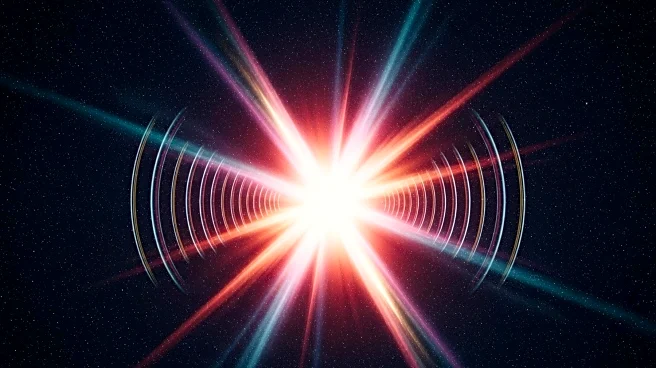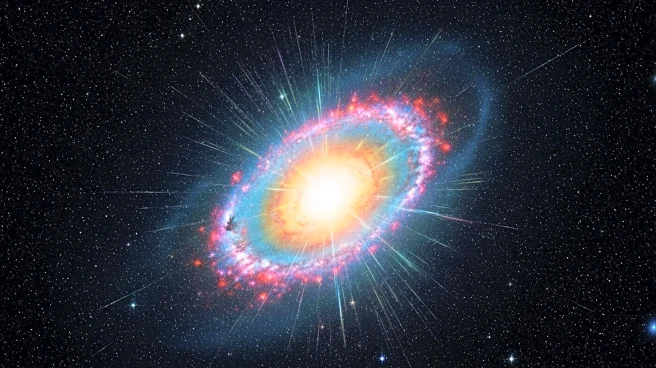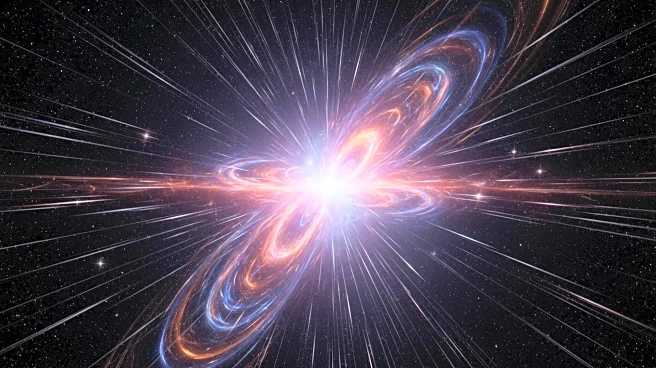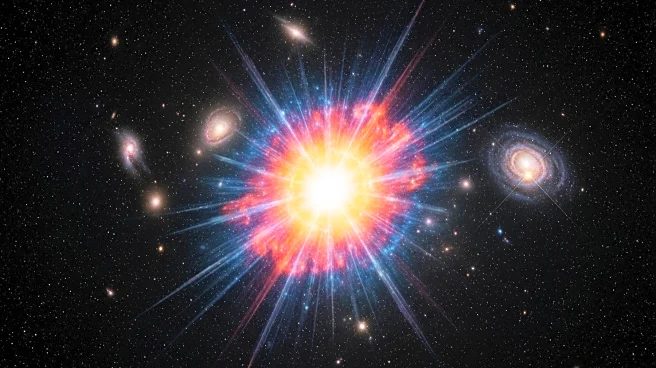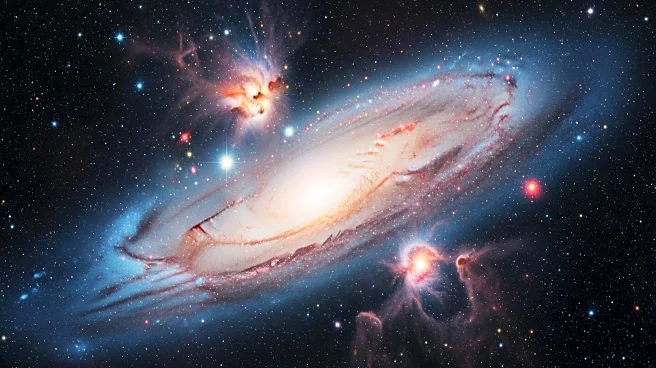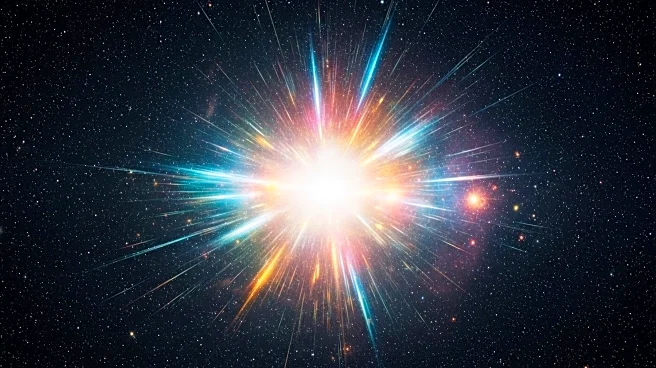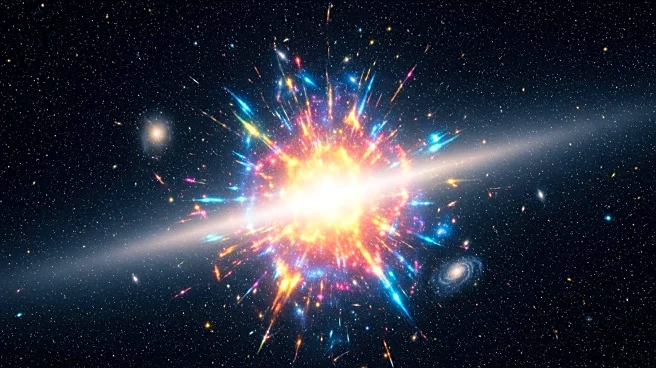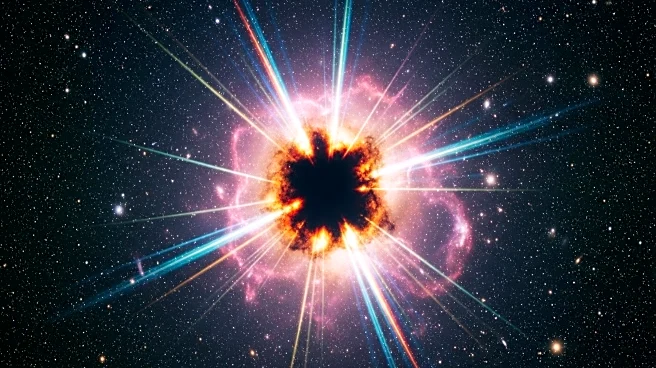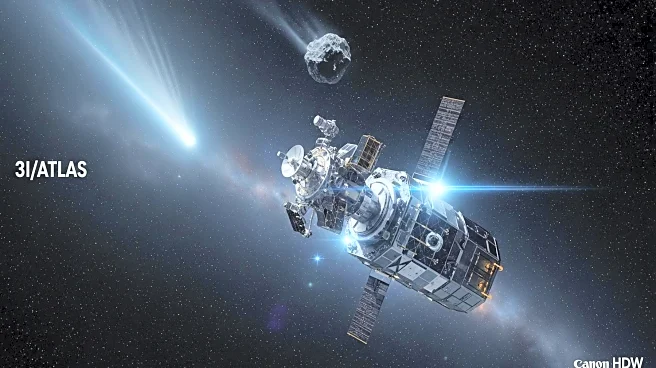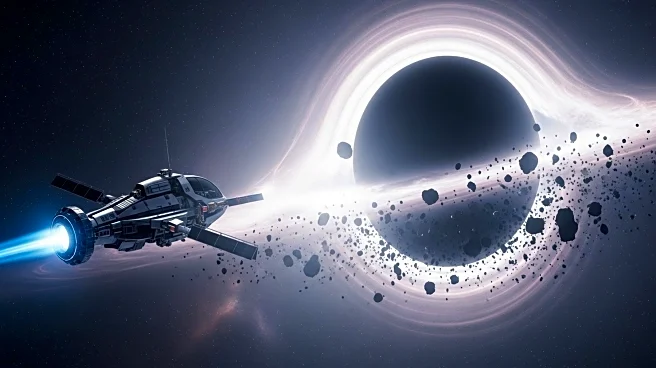What's Happening?
Astronomers have observed a gamma-ray burst (GRB) that defies conventional understanding of these cosmic events. The GRB, recorded on July 2, 2025, lasted about a day, which is significantly longer than typical GRBs that last milliseconds to minutes. Uniquely, this GRB appears to have repeated, a phenomenon not explained by current models. The event, designated GRB 250702B, was detected by NASA's Fermi gamma-ray telescope multiple times over several hours, indicating pulsating bursts of gamma rays. The discovery was further supported by data from the Einstein Probe, which detected X-rays from the same source a day earlier. The GRB is thought to originate from a galaxy with an unusual shape, possibly hinting at the cause of the explosions.
Why It's Important?
This discovery challenges existing theories about gamma-ray bursts, which are among the universe's most violent explosions. Typically, GRBs are single catastrophic events, but the repeated nature of GRB 250702B suggests a different mechanism at play. Understanding this event could lead to new insights into cosmic phenomena and the conditions that produce such bursts. The research could also impact the study of black holes and neutron stars, as these are believed to be the primary sources of GRBs. The findings may prompt a reevaluation of current models and theories, potentially advancing the field of astrophysics.
What's Next?
Astronomers aim to determine the distance to the galaxy that produced GRB 250702B to calculate its brightness and energy release. This will help narrow down the possible mechanisms behind the burst. The research team, led by Antonio Martin-Carrillo and Andrew Levan, continues to analyze data from various telescopes to understand the event better. Further observations and studies may reveal whether this GRB represents a new class of cosmic phenomena or if it can be explained by existing theories with modifications.
